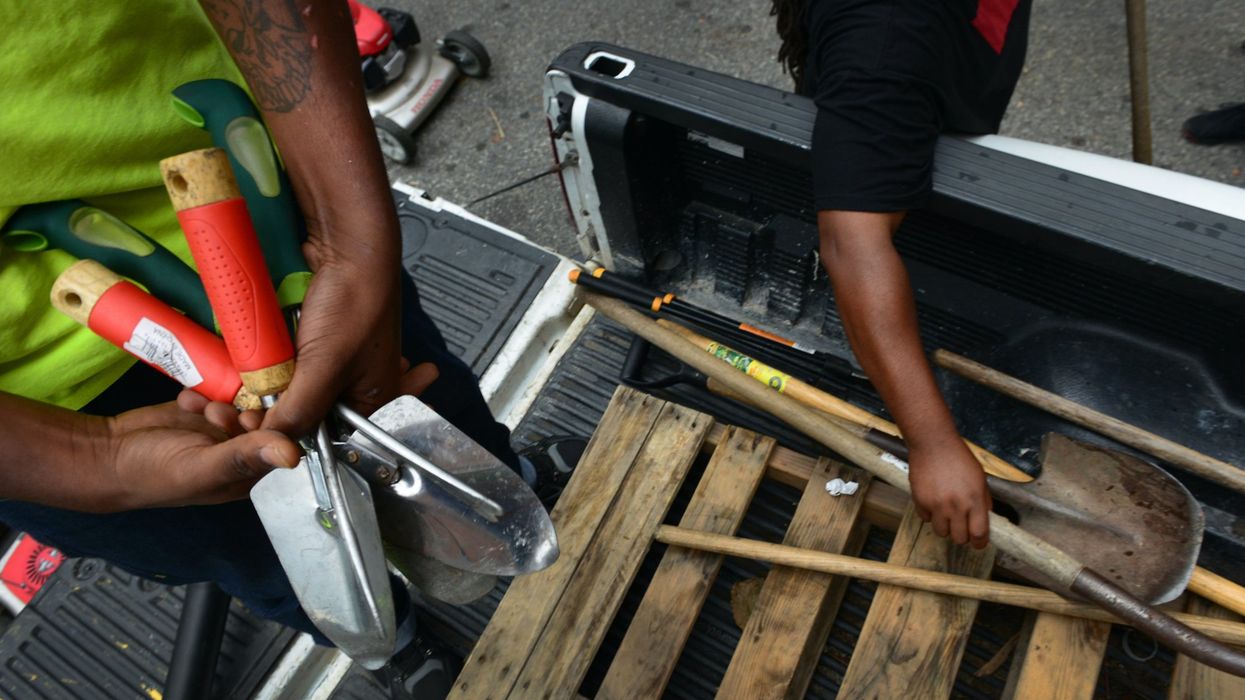Get the Latest on Hurricane Sandy...Storm Track...Impact Projections
 A man hurries to prepare a restaurant from the high winds of approaching Hurricane Sandy on Oct. 28, 2012 in Ocean City, N.J. New Jersey is expected to be hit hard by approaching storm sometime on Monday, bringing heavy winds and floodwaters. (Getty Images)
A man hurries to prepare a restaurant from the high winds of approaching Hurricane Sandy on Oct. 28, 2012 in Ocean City, N.J. New Jersey is expected to be hit hard by approaching storm sometime on Monday, bringing heavy winds and floodwaters. (Getty Images)
New York City Mayor Michael Bloomberg on Sunday ordered mandatory evacuations of parts of lower Manhattan and other low-lying areas in the city as the Northeast braces for Hurricane Sandy.
Bloomberg also announced the city's 1.1 million-student public school system would be closed Monday. New York Gov. Andrew Cuomo had already ordered all bus, subway and commuter train service be halted at 7 p.m. Sunday.
"If you don't evacuate, you are not only endangering your life, you are also endangering the lives of the first responders who are going in to rescue you," Bloomberg said during a news conference Sunday morning. "This is a serious and dangerous storm."
Rainfall was expected to start late Sunday or early Monday in New York as Sandy headed north from the Caribbean, where it left more than five dozen people dead. It was expected to turn left toward the mid-Atlantic coast and come ashore late Monday or early Tuesday, most likely in New Jersey, and collide with a wintry storm coming from the west and a cold front from the Arctic to create a rare hybrid storm.
 A woman grabs the few remaining water bottles from the shelves at the Waldbaums grocery store as Hurricane Sandy approaches on Oct. 28, 2012 in Long Beach, New York. (Getty Images)
A woman grabs the few remaining water bottles from the shelves at the Waldbaums grocery store as Hurricane Sandy approaches on Oct. 28, 2012 in Long Beach, New York. (Getty Images)
Bloomberg said forecasters had revised their initial predictions upward and were expecting a six- to 11-foot storm surge to affect low-lying areas of New York City. The worst of the storm was expected to come Monday night.
"I don't want anybody to go to bed tonight thinking they can spend some time worrying" tomorrow, Bloomberg said. "We've got to take some preparations today and we anticipate the surge will hit a lot of low-lying areas and the possibility of flooding will continue to Tuesday afternoon."
The National Weather Service said Sunday morning that Sandy was expected to bring "life-threatening" storm surge flooding to the mid-Atlantic coast, including along the Long Island Sound and New York Harbor. Sandy was expected to have near-hurricane-force winds of 75 mph when it made landfall.
A Johns Hopkins University engineer predicted as many as 10 million people from northern Virginia to New Jersey and into southeastern Pennsylvania could lose power as a result of the storm.
As of Sunday afternoon, airlines had canceled more than 5,000 flights -- 1,100 for flights and 4,000 for Monday.
 Construction workers carry boards of wood to cover air vents that could cause the New York City subway system to flood in preparation for Hurricane Sandy on Oct. 28, 2012 in New York. (Getty Images)
Construction workers carry boards of wood to cover air vents that could cause the New York City subway system to flood in preparation for Hurricane Sandy on Oct. 28, 2012 in New York. (Getty Images)
"Don't be stupid. Get out," New Jersey Governor Chris Christie added at a news conference Sunday, reiterating his statements from the previous day.
Though last year's mega-storm, Irene, ended up causing less damage than predicted, Christie noted that if the authorities are wrong, you have a little extra food and water. If they're right, however, people could wind up with severe injuries, and some could even be killed.
"That's not a great equation," he noted in his usual straightforward manner, once again urging people to get prepared and get out of the danger zones if possible.
President Obama also weighed in, promising local officials that the federal government will provide them whatever they need, and that they won't get "bogged down" by "rules" and "red tape":
"My message to the governors as well as to the mayors is anything they need, we will be there, and we will cut through red tape. We are not going to get bogged down with a lot of rules," he said. "We want to make sure we are anticipating and leaning forward into making sure that we have the best possible response to what is going to be a big and messy system.
This post will be updated.
The Associated Press contributed to this report.

 A man hurries to prepare a restaurant from the high winds of approaching Hurricane Sandy on Oct. 28, 2012 in Ocean City, N.J. New Jersey is expected to be hit hard by approaching storm sometime on Monday, bringing heavy winds and floodwaters. (Getty Images)
A man hurries to prepare a restaurant from the high winds of approaching Hurricane Sandy on Oct. 28, 2012 in Ocean City, N.J. New Jersey is expected to be hit hard by approaching storm sometime on Monday, bringing heavy winds and floodwaters. (Getty Images)





